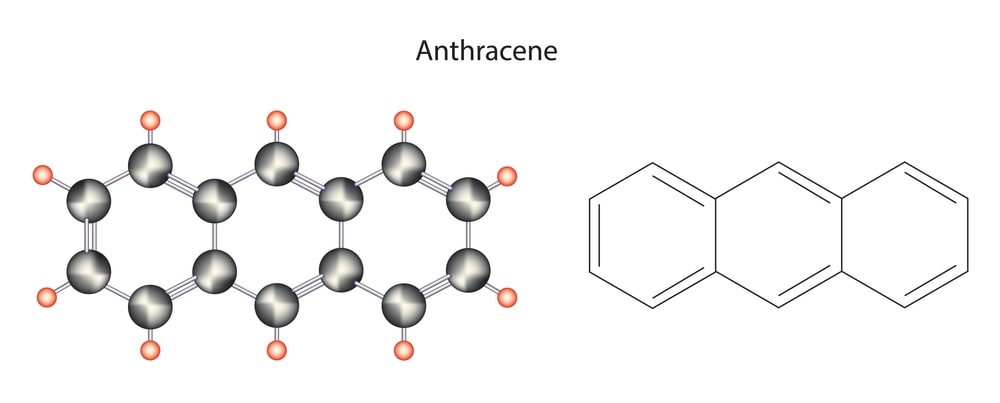Haworth Synthesis of Anthracene Here benzene reacts with phthalic anhydride in presence of AlCl3 to form o-benzoyl benzoic acid, which on heating with concentrated H2SO4 undergoes dehydration to 9,10-anthraquinone. This is reduced to anthracene on distillation with zinc dust.

Uses of Anthracene
The common applications of anthracenes are:
- It is used as a wood preservative.
- Used as an insecticide for crops.
- It can be converted into anthraquinone which is a precursor to dyes.
- Anthracene is used as a Scintillator for detectors of high-energy photons, electrons, and alpha particles.
- It is commonly used as a UV tracer in a coating applied to printed wiring boards.
- Derivatives of anthracene like 1-Hydroxy and 2-hydroxy and hydroxy anthracene (anthro and anthracennol) are pharmacologically active.
- Anthraquinone-derived drugs have different actions. Emodin has purgative action. Alizarine has spasmolytic and nephrotic action. Various condensed derivatives have antibacterial actions. Drugs like senna, cascara, and aloes contain anthraquinone as a glycone component and these drugs possess a laxative/cathartic effect.
- Anthraquinone monomer containing compound Marindone which is isolated from cell suspension culture of Morinda elliptical has promising anticancer and antioxidant activity. In recent studies, it has been found that the various herbal drugs which contain anthracene and its derivative have antimalarial, antibacterial anti-HIV, antifungal, antiviral, hepatoprotective, and diuretic activities.
Make sure you also check our other amazing Article on : Sterile Powders
